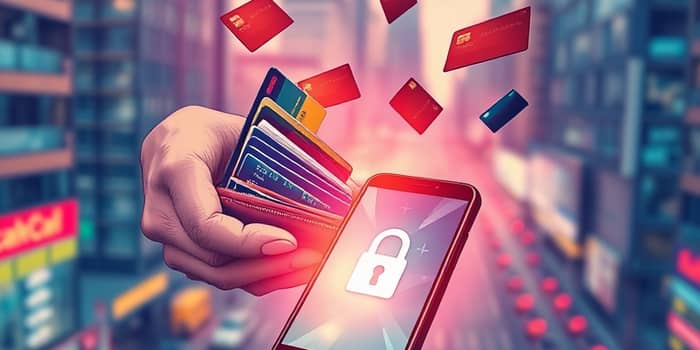
Discovering a missing or stolen card can be alarming. Within moments, you may face unauthorized charges, identity theft risks, and the inconvenience of replacing critical payment tools. Take swift, decisive action to protect your finances and personal information. This guide offers a comprehensive, step-by-step plan tailored to credit cards, debit and ATM cards, ID cards, and government-issued cards, ensuring you know exactly what to do the instant you realize a card has disappeared.
The moment you notice a card is gone, contact your card issuer immediately. Reporting the loss or theft as soon as possible limits your liability and activates your issuer’s fraud prevention protocols. Whether you call the customer service hotline or use the mobile app, make sure to act without delay to avoid unauthorized transactions.
Prepare essential details even if you don’t have your account number. Have your Social Security number or answers to security questions ready to verify your identity. Keep pen and paper nearby to record the name of the representative you speak with, the time of the call, and any reference numbers provided.
Many issuers offer mobile features that let you temporarily lock or freeze your card while you investigate. This can prevent any new charges from posting while you search for the missing card or arrange for a permanent replacement.
Federal law provides robust safeguards against unauthorized charges, but your level of protection depends on how quickly you report the loss. Under the Fair Credit Billing Act, credit cardholders who notify the issuer before any unauthorized use occur have zero liability. For debit cards, the Electronic Fund Transfer Act limits liability based on reporting time frames.
Federal law protects you if you report before unauthorized charges post. If you delay reporting, your maximum liability increases, especially for debit cards where delays beyond two business days can escalate costs significantly.
After reporting the loss and addressing immediate concerns, shift focus to ongoing monitoring. Unauthorized access can occur days or weeks after a card disappears, so remain vigilant. Review your statements daily via online banking or mobile alerts. Immediately flag any unfamiliar transactions so your issuer can investigate and reverse them if necessary.
Obtain free copies of your credit reports at least annually, and consider checking them more frequently following any incident. Services like IdentityTheft.gov allow you to place fraud alerts or freeze your credit, making it harder for thieves to open new accounts in your name.
Review your homeowner’s or renter’s insurance policy to see if it covers financial losses from card theft. If not, explore adding coverage to protect against fraud-related expenses in the future.
Once you’ve reported the loss, request replacement cards with new numbers. Most issuers expedite shipping, often arriving within a few business days. In the meantime, ask about expedited delivery fees or temporary virtual card numbers for online purchases.
After receiving new cards, update all automatic payments—utilities, subscriptions, loan payments—to avoid service interruptions. Keep a secure record of which accounts you’ve updated and verify each payment processes successfully. Maintain an updated emergency contact list with customer service numbers stored in your phone for rapid access.
Losses of state-issued ID cards, driver’s licenses, or government travel cards carry unique risks. Immediately report a missing driver’s license to your local DMV, and consider adding a police report for added identity theft protection. Monitoring your credit is essential, as thieves can use your ID for fraudulent accounts.
For work-related or government cards, notify both the agency program coordinator and the issuing bank without delay. Follow your organization’s protocols to prevent misuse of government funds or travel benefits. Document every step taken—from phone calls to written confirmations—to ensure full accountability and recourse if issues arise.
Proactive preparation can turn a crisis into a routine task. Create a secure list of card issuer phone numbers and keep it in a safe place, such as a password manager or encrypted note. Place a photocopy of the back of each card—showing issuer, customer service numbers, and account type—in your safe.
Take advantage of digital wallets and mobile payment apps, which often offer instant card controls, including freezing, unfreezing, and real-time transaction alerts. Use mobile wallet features to reduce reliance on physical cards and gain extra layers of authentication such as biometrics.
Consider subscribing to a reputable identity theft protection service that monitors dark web activity, credit bureau changes, and public records. These services can alert you to potential risks before they escalate into full-blown fraud.
Facing a lost or stolen card is stressful, but by following this immediate action plan and investing in long-term safeguards, you regain control quickly. From reporting the loss and understanding your liability to monitoring your credit and preparing for future incidents, every step you take reduces risk and empowers you to handle emergencies with confidence. You are not alone—armed with knowledge and preparation, you can protect your finances and peace of mind against ever-evolving threats.
References













